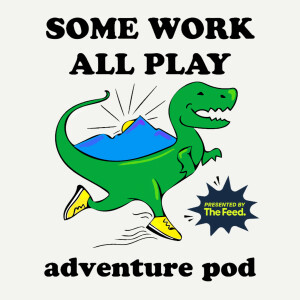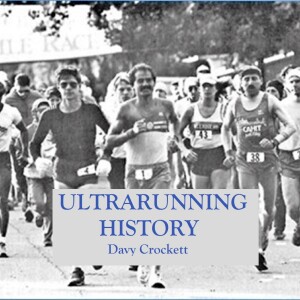More Episodes
86: Jackie Mekler (1932-2019) – Comrades Legend
 2021-08-26
2021-08-26
85: Mavis Hutchison – The Galloping Granny
 2021-08-12
2021-08-12
84: Wally Hayward (1908-2006) – South African Legend
 2021-07-29
2021-07-29
83: Hardy Ballington – The Forgotten Great Ultrarunner
 2021-07-19
2021-07-19
82: Roller Skating Ultra Distances – 1885 Six Days
 2021-07-06
2021-07-06
81: The 100-miler: Part 26 – The 1978 Western States 100
 2021-06-21
2021-06-21
80: The Comrades Marathon
 2021-06-08
2021-06-08
78: Strolling Jim 40 Mile Run
 2021-05-12
2021-05-12
77: The 100-miler: Part 24 (1978-1979) Alan Price – Ultrawalker
 2021-04-26
2021-04-26
76: The 100-miler: Part 23 (1983) The 24-Hour Two-Man Relay
 2021-04-11
2021-04-11
75: The 100-miler: Part 22 (1978) Fort Meade 100
 2021-03-29
2021-03-29
74: The 100-miler: Part 21 (1978) Ed Dodd and Don Choi
 2021-03-09
2021-03-09
73: The 100-miler: Part 20 (1978-79) The Unisphere 100
 2021-02-21
2021-02-21
72: The 100-miler: Part 19 (1977) Don Ritchie World Record
 2021-02-07
2021-02-07
71: The 100-miler: Part 18 (1977) Western States 100
 2021-01-22
2021-01-22
70: The 100-miler: Part 17 (1973-1978) Badwater Roots
 2021-01-09
2021-01-09
69: The 100-miler: Part 16 (1976-1977) Max Telford and Alan Jones
 2020-12-27
2020-12-27
68: The 100-miler: Part 15 (1975-1976) Andy West
 2020-12-19
2020-12-19
67: The 100-miler: Part 14 (1975-1976) Cavin Woodward and Tom Osler
 2020-12-05
2020-12-05
Create your
podcast in
minutes
- Full-featured podcast site
- Unlimited storage and bandwidth
- Comprehensive podcast stats
- Distribute to Apple Podcasts, Spotify, and more
- Make money with your podcast
It is Free
You may also like

The CITIUS MAG Podcast | A Running + Track and Field Show


Some Work, All Play


Trail Runner Nation


Coming Up for Air


Doctors of Running Podcast


- Privacy Policy
- Cookie Policy
- Terms of Use
- Consent Preferences
- Copyright © 2015-2024 Podbean.com




 iOS
iOS Android
Android